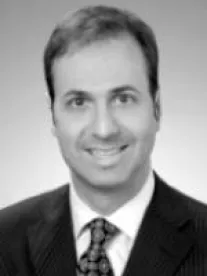On February 4, 2013 in Espenscheid v. DirectSat USA, LLC a Seventh Circuit panel unanimously affirmed a Wisconsin District Court judge's decision to decertify a large off-the-clock overtime class action. Judge Richard Posner wrote the opinion affirming the decertification and, in his inimitable style, he provides an easy-to-read dissertation on the limits of the class action device, proper standards for class certification, and the requirement for the plaintiff to propose a manageable trial plan if he wants to avoid having his class decertified. As discussed below, this case is chock full of notable points.
The Underlying Facts of the Proceedings Below
The facts are fairly simple. The plaintiffs obtained conditional class certification under the FLSA and class certification under Rule 23 for a class of 2341 satellite techs ("cable guys" for satellite) who were paid a fixed amount per each satellite service call they performed. The suit alleged that management required the satellite techs to perform work that was not compensated in the piece rate, and required them to work more than 40 hours per week without payment of overtime. The plaintiffs contended that DirectSat pressured them to report less than all their actual work time in order for DirectSat to avoid paying overtime. It is unclear from the opinion, but it does not appear that plaintiffs argued that when they reported more than 40 hours in a week, they still received no overtime. Rather, it appears they claim that workers were systematically pressured to report less than all of their time.
It is odd that this case ever got certified in the first place, but it eventually dawned on the district court that there would likely be significant individualized issues to resolve at trial, so the court asked the plaintiffs to propose a trial plan. The plaintiffs repeatedly resisted, but then finally proposed to prove the case by using 42 "representative witnesses" but they failed to explain how these witnesses would be selected, what would make them representative, and how would they address individualized issues. As such, the district court decertified the action and the plaintiffs ultimately appealed the decision.
The Seventh Circuit's Decision to Affirm the Decertification
In affirming the decertification, Judge Posner made all of the following trenchant observations:
(1) Despite the differences between the FLSA and Rule 23 procedures for collective and class actions, Judge Posner holds that, at bottom, "there isn’t a good reason to have different standards for the certification of the two different types of action, and the case law has largely merged the standards. . . . And so we can, with no distortion of our analysis, treat the entire set of suits before us as if it were a single class action." This supports the notion that the requirement of predominance of common issues applies the same under the FLSA and Rule 23.
(2) To determine damages would have required 2341 separate evidentiary hearings, "which might swamp the Western District of Wisconsin with its two district judges." The reason was that the satellite tech job was not one with 8-5 hours where the employees were alleged to have worked without a lunch break, thus working 45 hours per week but being paid for 40. Rather, the employees were paid on a piece rate which raised big individualized issues as to the time they spent working. To wit:
"[S]ince workers differ in their effort and efficiency—that some, maybe many, of the technicians may not work more than 40 hours a week and may even work fewer hours; others may work more than 40 hours a week. Variance would also result from different technicians’ doing different tasks, since it’s contended that the employer told them not to report time spent on some of those tasks, though— further complicating the problem of proof—some of them reported that time anyway."
As such, there were significant individualized issues whether employees really worked more than 40 hours and whether the pay the received covered all the time they actually worked, among other issues.
(3) The plaintiffs purported solution to this was to select a sample of 42 class members, but Plaintiffs were unable to explain how the 42 were selected, "whether for example they were volunteers, or perhaps selected by class counsel after extensive interviews and hand picked to magnify the damages sought by the class." There was no showing at all made that they used sampling methods used in statistical analysis, such as random sampling.
(4) Posner went further, however, and said that even by happenstance if the average OT worked by the 42 matched precisely the average of the class, there still would be issues precluding class certification because the distribution among class members would not be at all uniform:
"No one thinks there was such uniformity. And if for example the average number of overtime hours per class member per week was 5, then awarding 5 x 1.5 x hourly wage to a class member who had only 1 hour of overtime would confer a windfall on him, while awarding the same amount of damages to a class member who had 10 hours of overtime would (assuming the same hourly wage) undercompensate him by half. The differences would not be trivial, because the technicians’ average hourly rate was about $15."
Judge Posner then goes on to provide all the different variations that arise among piece rate workers that could lead to wide variations in both liability and damages for both minimum wage and overtime liability.
(5) Judge Posner also notes that the class members have no records whatsoever of the actual time they worked: "they are not like lawyers, who record every bit of work they do for a client, in 6-minute segments." Although individuals would be free to prove their time worked from memory or estimations that would allow a trier of fact to draw a just and reasonable inference of the time they worked, an inference of a "small, unrepresentative sample" cannot show the "work time of thousands of workers."
(6) Plaintiffs were unable to explain how liability could be established collectively and provided no method to determine individual damages. Judge Posner sagely noted that Plaintiffs must have thought the case would just settle so they did not need to worry about trial procedure (the classic Underpants Gnomes problem), but that was no excuse for lacking a workable trial plan:
"[Plaintiffs' counsel] must think that like most class action suits this one would not be tried—that if we ordered a class or classes certified, DirectSat would settle. That may be a realistic conjecture, but class counsel cannot be permitted to force settlement by refusing to agree to a reasonable method of trial should settlement negotiations fail. Essentially they asked the district judge to embark on a shapeless, freewheeling trial that would combine liability and damages and would be virtually evidence-free so far as damages were concerned."
Broader Implications of the Decision Concerning Class Certification
What Judge Posner does not say, but which seems evident from the points he makes, is that these same issues should exist at the initial class certification determination. What led this district court to certify the class in the first place given the plaintiffs complete lack of scientific basis for their purported "representative evidence"? Wouldn't the points about substantial individualized differences among workers under a piece rate system have been evident at class certification? Judge Posner does not expressly comment. Despite his silence, this case should definitely be worth citing in any sort of off-the-clock case to explain to a court why a class trial will prove unworkable.



 />i
/>i

